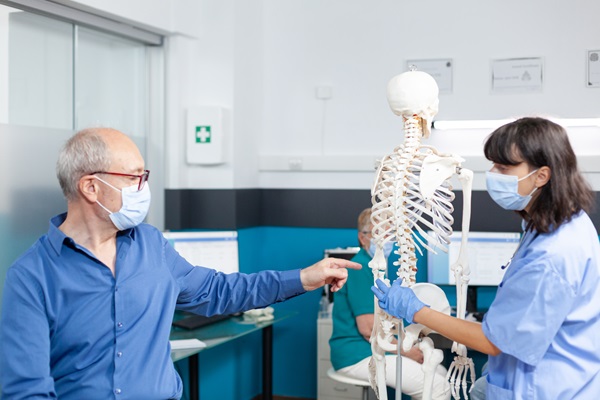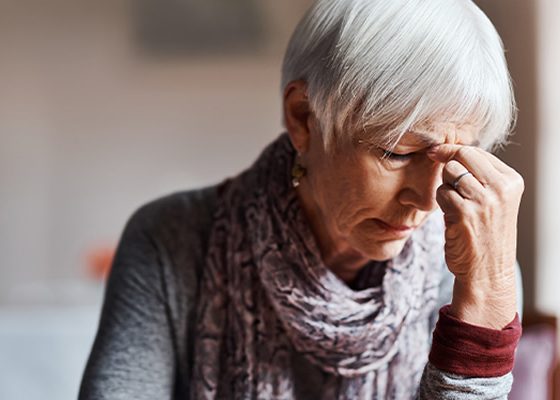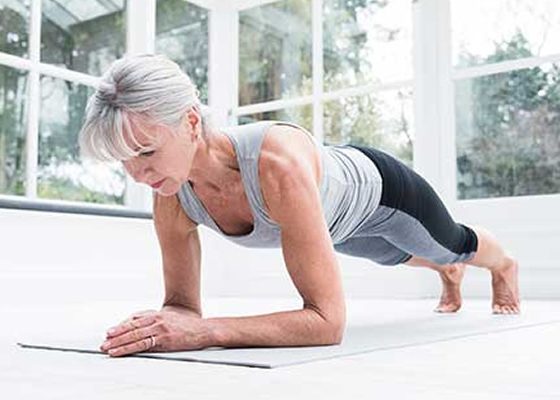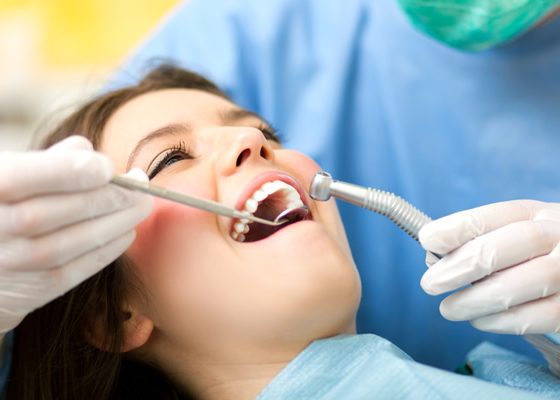Osteoporosis is not an inevitable consequence of aging. With the right strategies, you can actively protect your bone health and reduce the risk of this debilitating condition. In this comprehensive guide, we will explore a multitude of approaches to osteoporosis prevention strategies, from dietary choices to exercise routines, lifestyle adjustments, and the role of hormonal health. We’ll also delve into specific considerations for different age groups and genders. By implementing these strategies, you can fortify your bones and ensure a strong and active life.

Understanding Osteoporosis
Before we delve into osteoporosis prevention strategies, it’s crucial to have a basic understanding of what osteoporosis is. Osteoporosis is a condition characterized by the weakening of bones, which become brittle and prone to fractures. This happens because bone density decreases and the bone structure deteriorates. While it’s more common in older adults, it can affect people of all ages.
The Importance of Osteoporosis Prevention Strategies
Preventing osteoporosis is far more effective and practical than treating it after it develops. Fractures and breaks related to osteoporosis can lead to serious complications, decreased quality of life, and increased healthcare costs. Osteoporosis prevention strategies are key to maintaining your independence and overall well-being.
The Role of Nutrition
Calcium Intake
Calcium is a cornerstone of bone health. It’s essential for the formation and maintenance of strong bones. To make the most of your calcium intake, consider the following:
Types of Calcium-rich Foods
- Dairy products like milk, yogurt, and cheese
- Leafy green vegetables such as kale and broccoli
- Fortified foods like orange juice and cereals
- Nuts and seeds, particularly almonds and chia seeds
Recommended Daily Allowance
The recommended daily calcium intake varies by age and gender. For example, adults between 19 and 50 years should aim for 1,000 mg per day, while those over 50 should increase that to 1,200 mg.
Absorption Factors
Understand that calcium absorption is influenced by various factors, including vitamin D intake, which we’ll explore in more detail later.
Vitamin D
Vitamin D is a crucial partner in calcium absorption and bone health. It’s unique in that our bodies can produce it when exposed to sunlight, but it’s also found in some foods and supplements. Here’s what you need to know:
Sunlight and Vitamin D
Getting regular, safe exposure to sunlight helps your body produce vitamin D naturally. Just 10-15 minutes of sun exposure a few times a week can be sufficient.
Dietary Sources
Include foods like fatty fish (salmon, mackerel), egg yolks, and fortified dairy products in your diet. If your vitamin D intake through food and sunlight is insufficient, consider supplements.
Other Essential Nutrients
Calcium and vitamin D aren’t the only players in bone health. These nutrients also play crucial roles:
Magnesium, Vitamin K, and Zinc
- Magnesium is necessary for the activation of vitamin D, which, in turn, aids in calcium absorption.
- Vitamin K contributes to bone mineralization and strengthens bones.
- Zinc is essential for collagen production and mineralization, which are integral for bone strength.
Physical Activity and Exercise
Physical activity and exercise are indispensable for osteoporosis prevention strategies. They help in several ways, from boosting bone density to improving balance and posture.
Weight-Bearing Exercises
Impact on Bone Density
Weight-bearing exercises such as walking, dancing, and jogging stimulate bone growth and help maintain bone density. Consider at least 30 minutes of weight-bearing exercise most days of the week.
Sample Exercises
- Brisk walking
- Hiking
- Stair climbing
- Tennis
- Aerobics
Strength Training
Building Muscle and Bone
Strength training exercises with weights or resistance bands increase muscle mass and bone density. This is particularly important as we age, as it can counteract the natural loss of bone mass.
Exercises for Strength
- Squats
- Lunges
- Deadlifts
- Push-ups
- Planks
Balance and Posture
Reducing the Risk of Falls
A major concern for people with osteoporosis is the risk of falls and fractures. Balance and posture exercises can greatly reduce this risk.
Balance-Enhancing Activities
- Tai Chi
- Yoga
- Pilates
- Balance board exercises
Regularly incorporating these exercises into your routine can make a significant difference in your bone health and overall well-being.

Lifestyle Factors
Your lifestyle choices can significantly impact your risk of osteoporosis. Addressing these factors can be a key part of osteoporosis prevention strategies.
Smoking and Alcohol
Their Detrimental Effects
Both smoking and excessive alcohol consumption are known to weaken bones. Smoking can reduce bone density, while excessive alcohol can hinder calcium absorption and affect hormonal balance.
Strategies for Quitting
If you smoke, consider smoking cessation programs and support. For alcohol, moderate your intake or seek help if you struggle with excessive consumption.
Caffeine Consumption
Moderation and Osteoporosis
Caffeine in moderation is generally not harmful to bone health. However, excessive caffeine intake can interfere with calcium absorption. Keep your caffeine consumption in check.
Healthy Caffeine Habits
Opt for beverages like green tea, which has potential bone-protective compounds, and remember to balance caffeine with adequate calcium and vitamin D intake.
Stress Management
Cortisol and Bone Health
Chronic stress can elevate cortisol levels, which, in excess, can weaken bones. Stress management techniques are crucial for maintaining bone health.
Stress-Reduction Techniques
Explore stress-reduction methods such as meditation, deep breathing exercises, and regular physical activity to manage stress effectively.
Hormonal Health
Hormones play a vital role in bone health. Maintaining hormonal balance is critical to preventing osteoporosis.
Hormone Replacement Therapy
Pros and Cons
Hormone replacement therapy (HRT) can help maintain hormonal balance in postmenopausal women, but it’s not without risks. Discuss the pros and cons with your healthcare provider.
Indications for Use
HRT may be recommended for women experiencing severe menopausal symptoms and those at high risk of osteoporosis. Always consult your doctor for personalized advice.
Maintaining Hormonal Balance
Natural Methods
Natural ways to maintain hormonal balance include a balanced diet, regular exercise, and reducing stress. These methods are beneficial for both men and women.
Dietary Considerations
Incorporate foods rich in phytoestrogens, such as soy and flaxseed, which can help balance hormones naturally.
Regular Check-Ups
Regular check-ups and assessments are crucial for identifying and addressing osteoporosis risk factors.
Bone Density Testing
Who Needs It?
Bone density testing is recommended for postmenopausal women, men over 50, and individuals with certain risk factors.
Frequency of Testing
The frequency of bone density testing depends on your risk factors. Discuss this with your healthcare provider.
Doctor Consultations
Discussing Risk Factors
Regular consultations with your healthcare provider allow you to discuss risk factors and create personalized prevention plans.
Medications and Supplements
In some cases, medications and supplements may be necessary to prevent osteoporosis.
Prescription Medications
When Are They Necessary?
Prescription medications are typically recommended for those at high risk of fracture or who have already been diagnosed with osteoporosis.
Potential Side Effects
Be aware of potential side effects associated with these medications and discuss any concerns with your healthcare provider.
Supplements
Calcium and Vitamin D Supplements
In certain situations, supplements may be needed to meet your calcium and vitamin D requirements. Your healthcare provider can provide guidance.

Osteoporosis in Men
Osteoporosis is often seen as a women’s issue, but men are also at risk. Understand these special considerations.
Why Men Are at Risk
Factors like age, family history, and low testosterone levels can increase a man’s risk of osteoporosis.
Tailored Prevention Strategies
Osteoporosis prevention strategies for men are similar to those for women but may need to be adjusted based on individual risk factors and hormonal balance.
Osteoporosis in Children and Adolescents
Osteoporosis prevention strategies begin in childhood. Building strong bones during youth is a foundation for lifelong bone health.
Building Strong Bones Early
Childhood Nutrition
Children and adolescents need adequate calcium and vitamin D to support growing bones. Encourage a balanced diet.
Physical Activity
Promote regular physical activity to help build strong bones. Activities like running, jumping, and sports are particularly beneficial.
Recognizing Risk Factors
Family History
A family history of osteoporosis may indicate a genetic predisposition. Be aware of your family’s medical history.
Medical Conditions
Certain medical conditions or medications can affect bone health in children and adolescents. Discuss any concerns with your child’s healthcare provider.
Osteoporosis Prevention Strategies at Different Life Stages
Osteoporosis Prevention strategies can be adapted to different life stages.
Preventing Osteoporosis in Your 20s and 30s
In your younger years, focus on building bone density through proper nutrition, exercise, and a healthy lifestyle.
Preventing Osteoporosis in Your 40s and 50s
As you age, pay closer attention to hormonal changes, especially in women going through menopause. Adjust your osteoporosis prevention strategies as needed.
Preventing Osteoporosis in Your 60s and Beyond
In later life, continue with osteoporosis prevention strategies and ensure regular check-ups to monitor your bone health.
The Importance of Community Education
Preventing osteoporosis is not an individual endeavor. Community education plays a significant role.
Raising Awareness
Community-based programs and public campaigns can raise awareness about osteoporosis prevention strategies and the importance of early intervention.
Support and Resources
Osteoporosis organizations and local support groups offer resources, education, and a network of people who understand your journey.
Real-Life Success Stories
Learn osteoporosis prevention strategies from those who have successfully prevented osteoporosis. Their experiences can provide valuable insights.
Personal Testimonials
Hear from individuals who have taken proactive steps to prevent osteoporosis and maintained strong bones throughout their lives.
Tips and Insights from Preventers
Discover tips and insights from people who have successfully incorporated osteoporosis prevention strategies into their daily lives. Their wisdom can be invaluable. os
Conclusion
Preventing osteoporosis is a lifelong commitment to your health and well-being. By following Osteoporosis prevention strategies, you can take charge of your bone health and enjoy an active, fracture-free life.
Incorporating nutrition, exercise, and lifestyle adjustments, understanding the role of hormones, and regular check-ups are all crucial elements of osteoporosis prevention strategies. Whether you’re in your 20s or your 60s, it’s never too early or too late to begin the journey to safeguard your bone health.
By taking action and making informed choices, you empower yourself to create a future free from the burden of osteoporosis.




